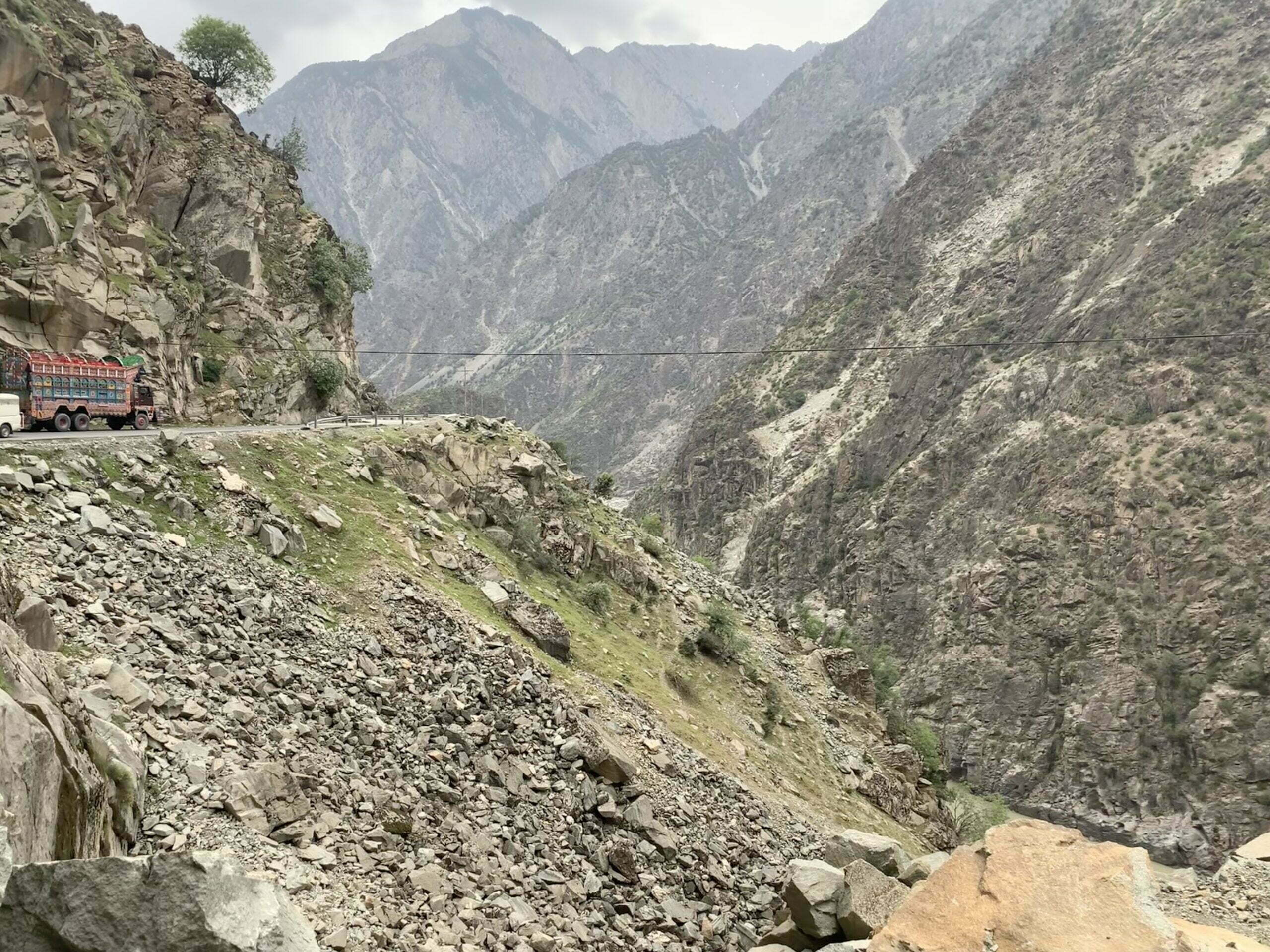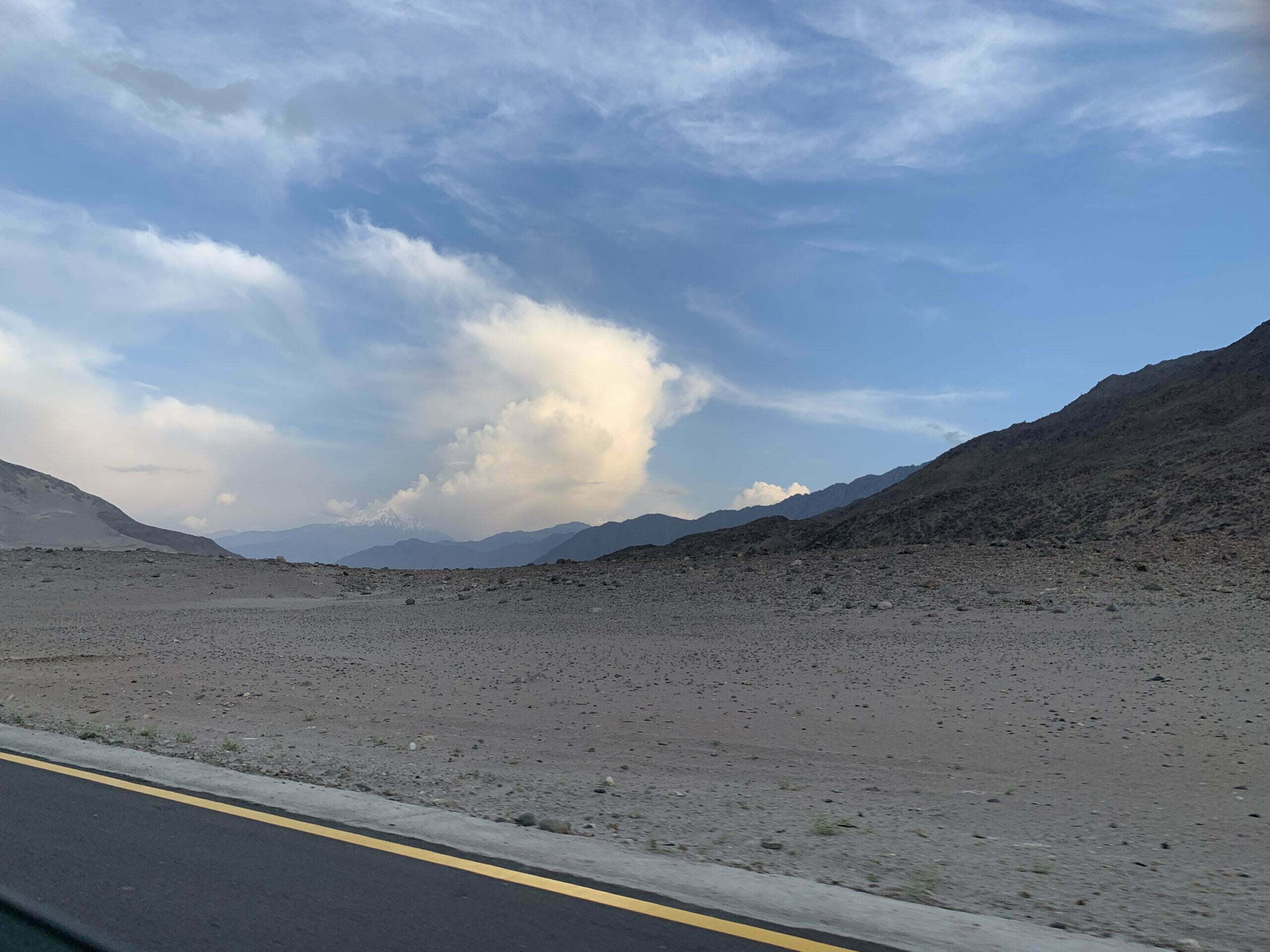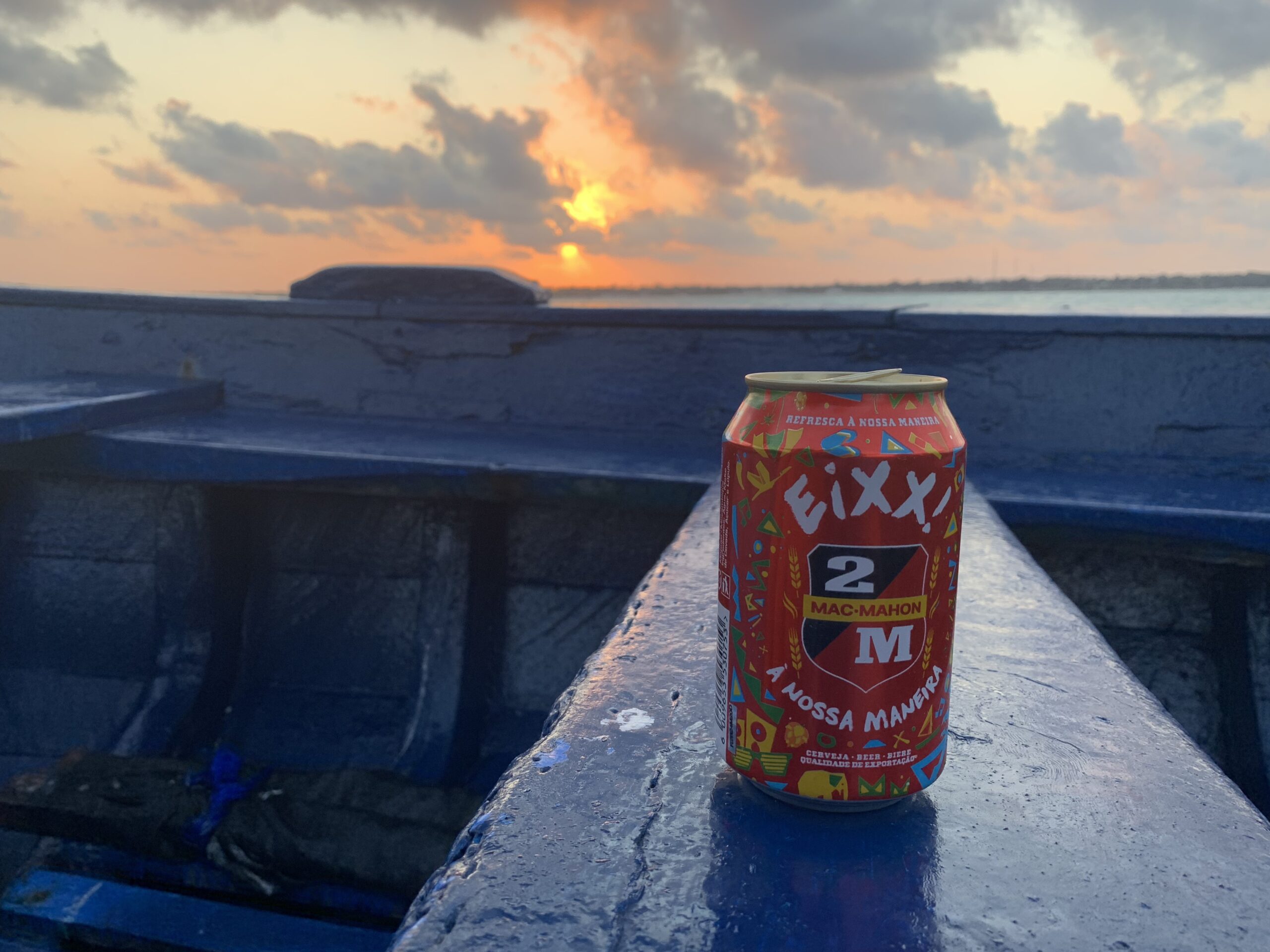The next morning the alarm clock rang, as already mentioned, already at 05:30. So we quickly took a short shower to get awake and forced ourselves – although we were still very stuffed from the night before – to a small, quick breakfast.
Ahmad briefly introduced us to our “Professional Driver” Mudassir after check-out and the four of us were already sitting in the car heading for our first real stage destination, the Hunza Valley in the Gilgit-Baltistan region. This way should mean a long day in the car, which should lead us over the Karakoram Highway closer and closer to our destination. We drove through a really breathtakingly beautiful landscape – gray rocky steppes constantly alternated with very green areas, in places crossed by mighty mountain rivers. The mountains, which we had noticed only slightly in the background at the beginning of the tour, became steadily larger and very soon dominated the scenery. Even though we had been in the mountains many times before, we were offered a spectacle that really took our breath away and almost magically captivated us.

Again and again we made short breaks for photos and our first stop was about 10 minutes at the Nanga Parbat viewpoint. As soon as we got out, we were directly approached by a local stone dealer who offered various stones for sale, including lapis lazuli – a beautiful, strongly blue shimmering rock. We were not yet in a buying mood and so we declined his offer with thanks. No 3 minutes later 2 boys tried to sell us pebbles from the roadside as original rocks from the summit of Nanga Parbat, which they themselves had allegedly collected there – we could also resist this offer.




Further our way led us – always accompanied by local music – higher and higher and the highway became narrower and narrower. In places the width of the road was really only made for one vehicle, on the left of the road (or gravel road) it went several hundred meters into the depth – of course without guard rails or other demarcations. Mudassir skillfully steered our vehicle without a single sign of nervousness even through this terrain, while Ahmad kept pointing out special highlights to us. What should strike us on this tour and also the next days several times, was the fact that China also here (as already seen in Africa) invested heavily in infrastructure and had built several tunnels. Each of these tunnels was decorated with the inscription “Long live the Pakistani-Chinese friendship”.
Our ride was interrupted only in a small town where Ahmad was looking for a copy store to make more copies of our passports – all copies were marked with the names of guide and driver, as well as the license plate number of our vehicle, which astonished us a bit. Soon we were to learn what the purpose of this exercise was. On one section of the highway, we were actually accompanied by a police escort at all times. Escort means here actually a police vehicle with a, on the roof mounted, machine gun and several officers, who kept always suspiciously the steep slopes right of the road in view. The escort always accompanied us to the next checkpoint, where our copies were handed in and we were handed over to the next escort. We always felt safe despite this, for us unusual situation, and we were assured that these measures were only pure precautionary measures of the government to protect foreign tourists.




Around 6:30 p.m. we reached our intermediate destination: the Shangrila Chilas Hotel in Chilas on the Indus River. We let the experiences of the day sink in while we had tea and coffee in the garden and waited for dinner, which was again excellent and, much to Andreas’ delight, could also be eaten exclusively with the hands.

Jahrgang 1981;
Technikfreak und Hobby-Fotograf (inkl. Videos)





Recent Comments